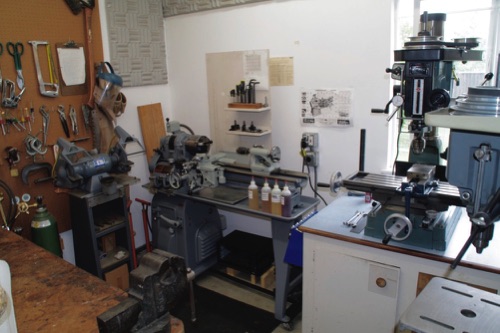
Yep... I’m a home-shop machinist, too
After taking metalworking classes in high school, I worked part-time at a small shop where we did all kinds of fabrication that included electrical, sheet metal, plastic, and of course use of the lathe and milling machine. I also learned to weld in college. So... my shop includes all sorts of equipment, tools, and supplies for those tasks.
Crammed into this 8 by 10 foot area is a lathe, mill, drill press, 4x6 cutoff saw, grinder, and oxy-acetylene welder, along with a bench. It’s partially walled off from my woodshop, but I use cloth covers for the machines when dust is in the air.
Below is a photo of my 1958 South Bend Heavy-10 lathe. I restored it in about 7 weeks, taking it down to bare metal and disassembling it down to the last bolt, gear, and tapered pin. This is truly a classic piece of American machinery, the most popular lathe ever built. And it was made to be maintained and rebuilt. I note that restoring machinery is like restoring classic cars, except almost nobody can appreciate it.
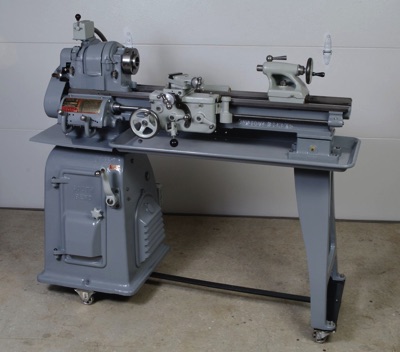
Here’s my Chinese drill-mill, the poor man’s vertical mill. It’s a love-hate relationship. Not a great machine, but once you get to know it, and use the right tools and techniques it’s ok. Don’t expect a great finish however; there’s just too much vibration and the column really could be stiffer.
The cabinet is super sturdy, with 4x4 corners, and 1.5” plywood top with formica, which is easy to clean.
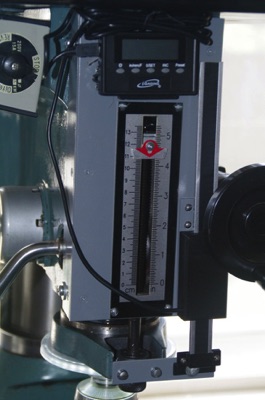
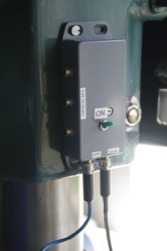
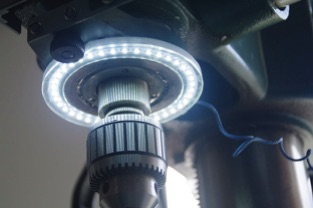
X, Y, and spindle all have iGaging DROs on them. For the spindle, I made a sheet metal spndle cover to replace the plastic one. For such cheap devices, they work great. The tachometer is a Mach Tach.
DRO readouts are now externally powered by 5 VDC derived from a wall-wart transformer and voltage regulator. (Lithium batteries actually last quite long.) This box also powers the ring light, below.
Another very useful addition is a ring light on the spindle. This idea came from the drill-mill Yahoo group. Search on Ebay for “angel eyes” LED rings. They come in many diameters and are really cheap, from China, and run on 12 VDC. Make an enclosure from Lexan or acrylic, with an inside diameter that’s a press-fit over the spindle housing. If it tends to fall off with heavy vibration, a couple dabs of silicone glue will keep it in place. Nice, uniform light and not too dazzling.
Since this photo was taken, I've converted the motor to a DC adjustable speed drive and added a digital tachometer, similar to what's on my drill-mill.
Also there are digital readouts on the carriage and tailstock ram, based on cheap iGaging linear encoders. They work great.
My Chinese 4x6 bandsaw is another sow's ear that can be tuned up to almost silk-purse level. There is a nice group that shows you how to fix it up.
My gearbox now has a clear cover so that I can inspect the gear oil and mechanism. It's made of 1/2-inch Lexan with a thin neoprene gasket.
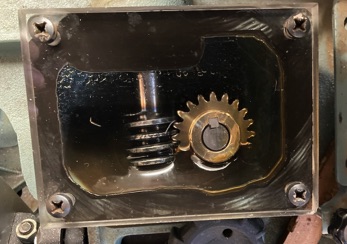
The vise has several improvements:
-- Extended faces made of 1/4-inch CRS.
-- A long screw at the left can be driven in to keep the faces parallel when holding very small workpieces.
-- An extension on the right helps support the cutoff piece
-- A piece of 2x2 angle stop the cut-off piece from falling on the floor or getting jammed.
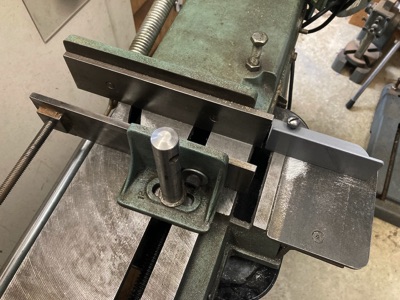

When used as a regular vertical bandsaw, this mid-sized work table is usually adequate and it doesn't interfere when operating horizontally.
I made a blade scraper to reduce the amount of swarf that gets carried into the bearings. Those are pieces of a hacksaw blade clamped into some aluminum plates. A long screw with a spring provides moderate pressure. A wingnut makes it easy to remove.